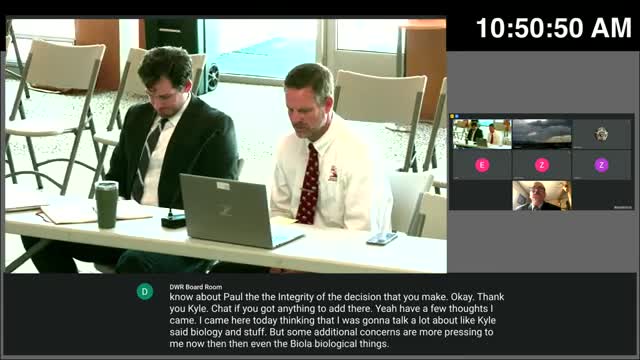Controversy erupts over public land in CWMU approval
August 22, 2024 | Utah Office of Tourism, Utah Governor's Office of Economic Opportunity, Offices, Departments, and Divisions, Organizations, Utah Executive Branch, Utah
This article was created by AI summarizing key points discussed. AI makes mistakes, so for full details and context, please refer to the video of the full meeting. Please report any errors so we can fix them. Report an error »

In a recent government meeting, significant concerns were raised regarding the approval process for the Kimberly Cooperative Wildlife Management Unit (CWMU), particularly the inclusion of public land and non-contiguous parcels. The coordinator of the CWMU expressed frustration over the lack of transparency in the approval process, revealing that public land was incorporated without proper disclosure to the CWMU advisory committee, the Resource Advisory Committee (RAC), or the board.
The coordinator highlighted that the original application indicated zero acres of public land, yet the current assessment shows a reduction from 5,614 acres of contiguous land to approximately 5,100 acres after accounting for public and non-contiguous land. This discrepancy raises questions about the integrity of the approval process and whether the CWMU would have been sanctioned had these details been disclosed initially.
Concerns were also voiced about the potential biological implications of managing elk populations within the CWMU. The coordinator noted that while harvesting bulls may be manageable, significant culling of cows could lead to pushback from landowners, who may fear losing elk on their properties. This situation underscores the complexities of wildlife management and the need for clear communication and collaboration among stakeholders.
The meeting concluded with a call for revisiting the inclusion of public land in the CWMU and a reassessment of the rules governing non-contiguous land. The coordinator emphasized the importance of transparency and thorough discussion in future decisions to maintain credibility and ensure effective wildlife management practices.
The coordinator highlighted that the original application indicated zero acres of public land, yet the current assessment shows a reduction from 5,614 acres of contiguous land to approximately 5,100 acres after accounting for public and non-contiguous land. This discrepancy raises questions about the integrity of the approval process and whether the CWMU would have been sanctioned had these details been disclosed initially.
Concerns were also voiced about the potential biological implications of managing elk populations within the CWMU. The coordinator noted that while harvesting bulls may be manageable, significant culling of cows could lead to pushback from landowners, who may fear losing elk on their properties. This situation underscores the complexities of wildlife management and the need for clear communication and collaboration among stakeholders.
The meeting concluded with a call for revisiting the inclusion of public land in the CWMU and a reassessment of the rules governing non-contiguous land. The coordinator emphasized the importance of transparency and thorough discussion in future decisions to maintain credibility and ensure effective wildlife management practices.
View full meeting
This article is based on a recent meeting—watch the full video and explore the complete transcript for deeper insights into the discussion.
View full meeting

